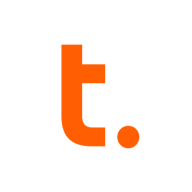

Teradata and Matillion Data Productivity Cloud compete in the data management solutions category. Teradata has the advantage in scalability and query performance, while Matillion is favored for its cloud-native user-friendliness and cost-effectiveness.
Features: Teradata's strengths include exceptional query performance, robust warehousing capabilities, and sophisticated analytics handling, making it ideal for high-volume processes. Matillion is recognized for its intuitive interface, seamless integration with cloud platforms like AWS, and user-friendly ETL processes, which benefit smaller or cloud-native teams.
Room for Improvement: Teradata could improve by reducing costs and enhancing cloud compatibility and unstructured data handling. Users seek better scalability and competitive pricing. Matillion needs to expand integration and data streaming capabilities, and further refine its user interface for efficiency.
Ease of Deployment and Customer Service: Teradata offers diverse deployment options across on-premises and cloud environments with generally positive customer support but needs faster response times. Matillion focuses on straightforward cloud deployments with flexible setups and receives positive support feedback for quick issue resolution.
Pricing and ROI: Teradata's premium pricing suits larger enterprises with significant data requirements, justifying costs through high data management efficiency and good ROI. Matillion offers transparent, consumption-based pricing ideal for smaller teams, allowing cost-effective scalability.
Consequently, we adjusted our processes to use Matillion Data Productivity Cloud only for extraction and ingestion, while Snowflake handled all transformations and jobs.
They communicate effectively and respond quickly to all inquiries.
The technical support from Teradata is quite advanced.
Customer support is very good, rated eight out of ten under our essential agreement.
The autoscale process works well, allowing the system to start another node automatically if the first machine reaches 80% capacity.
This expansion can occur without incurring downtime or taking systems offline.
Scalability is complex as you need to purchase a license and coordinate with Teradata for additional disk space and CPU.
I find the stability to be almost a ten out of ten.
The workload management and software maturity provide a reliable system.
Connections to BigQuery for extracting information are complex.
Unlike SQL and Oracle, which have in-built replication capabilities, we don't have similar functionality with Teradata.
Matillion Data Productivity Cloud offers discounts and special deals, especially when dealing with high-volume clients or fewer existing clients in specific regions, like Spain.
Initially, it may seem expensive compared to similar cloud databases, however, it offers significant value in performance, stability, and overall output once in use.
Teradata is much more expensive than SQL, which is well-performed and cheaper.
Matillion Data Productivity Cloud is effective for ingest functions, particularly when moving information to Snowflake and performing many transformations.
The data mover is valuable over the last two years as it allows us to achieve data replication to our disaster recovery systems.


Matillion Data Productivity Cloud features an intuitive graphical interface, seamless AWS integration, and efficient data management. Its tools streamline complex tasks for SFDC, RDS, Marketo, Facebook, and Google AdWords.
Matillion Data Productivity Cloud provides fast transformations with built-in verification, easy scheduling, and sampling. With automatic scalability and diverse data source support, it simplifies complex data tasks. Users benefit from cloud data warehousing and integrating data into Snowflake while appreciating its ease of use by non-technical teams. Enhancements can focus on frequent API adjustments, improved documentation, faster performance with less latency, and better error handling.
What are the key features of Matillion Data Productivity Cloud?
What benefits and ROI should users seek in reviews?
In industries such as technology, finance, and healthcare, Matillion Data Productivity Cloud is implemented to streamline ETL processes, optimize data pipeline construction, and enhance data migration efforts. It supports efficient data loading and integration between cloud and on-premises databases, aiding industries in managing data-driven projects.
Teradata is a scalable data analytics platform designed to meet enterprise demands for large-scale data management and processing, focusing on performance, scalability, and security for complex query executions.
As a leading data warehousing solution, Teradata integrates advanced analytics enabling organizations to derive insights from massive datasets. It supports high-volume data workloads with its architecture optimized for analytical queries. Users benefit from its robust scalability, allowing seamless expansion as data grows. Teradata's SQL engine is compatible with a wide range of data types, ensuring flexibility in data analysis. With advanced security measures, it protects sensitive data across various environments, providing peace of mind to users handling critical information.
What are the most important features of Teradata?Teradata is widely used in industries like finance, telecommunications, and healthcare, where data-driven decisions are critical. Companies leverage its robust analytics capabilities to enhance customer experiences, streamline operations, and ensure compliance with regulatory requirements. In these sectors, quick access to data insights can significantly impact competitive advantage.
We monitor all Cloud Data Integration reviews to prevent fraudulent reviews and keep review quality high. We do not post reviews by company employees or direct competitors. We validate each review for authenticity via cross-reference with LinkedIn, and personal follow-up with the reviewer when necessary.